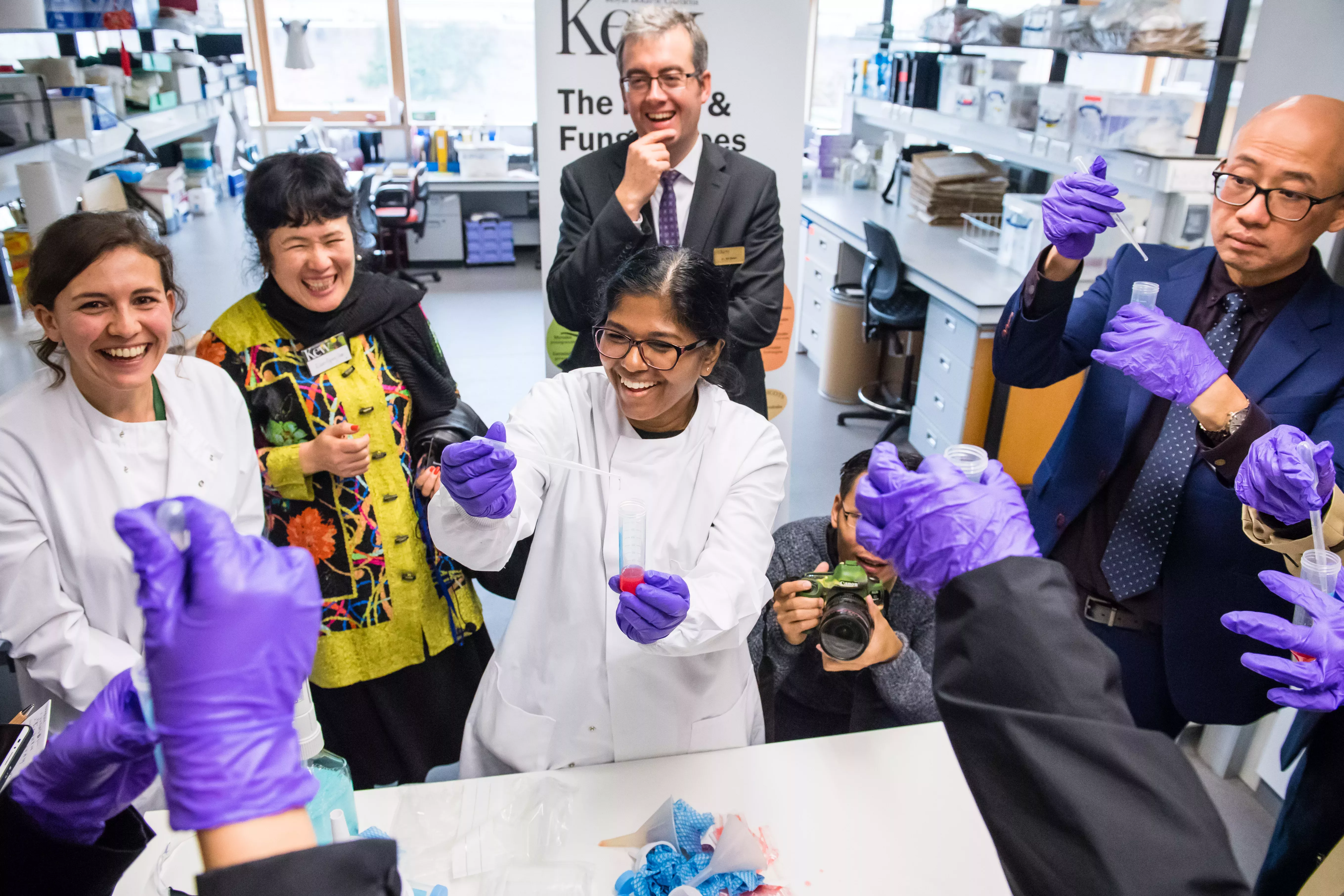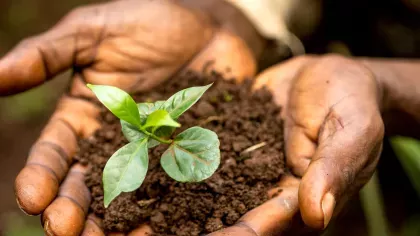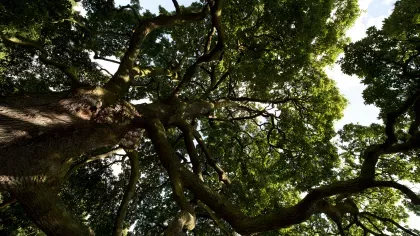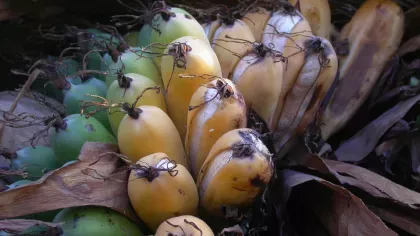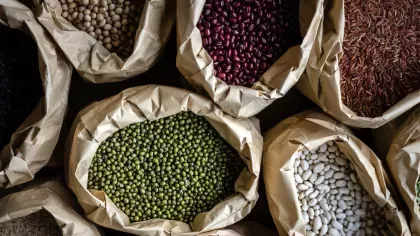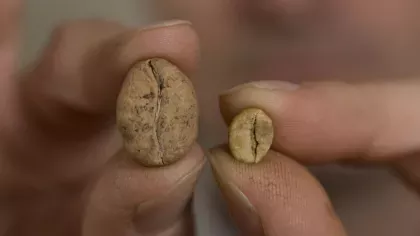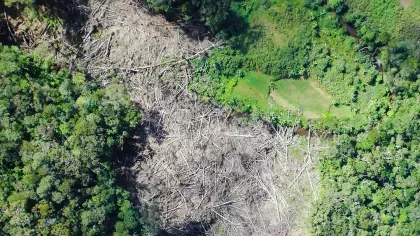23 September 2019
Plants and policy: Tackling global challenges
Biodiversity loss, climate change and sustainable development are urgent global issues. 2020 is a critical year to address all three - and plants are at the core of many solutions.

In October 2020, governments from 196 countries will gather at the UN Convention on Biological Diversity (CBD) in China, to set ambitious new global targets that aim to reverse biodiversity loss. This Post-2020 Global Biodiversity Framework will provide a roadmap for conservation efforts everywhere, going forward.
This is occurring at a time when the scale of biodiversity loss is staggering. Plants are intricately linked to human life, yet one in five plants are threatened with extinction. Drawing on over 250 years of plant and fungal expertise, Kew’s scientific research is at the forefront of informing policy - and contributing to biodiversity targets. From accelerating assessments of plants most at risk of extinction, to increasing food security in a changing climate, to protecting vulnerable ecosystems, Kew’s work is contributing plant and fungal based solutions to some of the world’s most pressing challenges.

Where to start in a biodiversity crisis?
With at least 390,000 plant species across the planet, and new species being discovered every year, there is a serious shortage of conservation resources to understand and monitor every single species. There is a risk that many species may go extinct before scientists can assess them, or before they are even discovered – potentially losing irreplaceable medicines, food sources, habitats, and climate regulators.
IUCN Red List Assessments
Over the past three years, Kew has been accelerating the number of plants being assessed for the IUCN Red List – the global source of information on species extinction risk. From 126 species of coffee (Coffea), to a plant genus that forms the basis of the Amazon rainforest (Myrcia), the status of many plant species has been captured for the first time. As well as continuing to assess new species, Kew’s Plant Assessment Unit will also be conducting further assessments – creating more ‘snapshots’ for species, so that not only the threat status of species can be determined, but also trends over time.
This is a particularly important indicator for measuring progress towards conservation targets - it allows us to answer key questions such as how many species are threatened with extinction, and are conservation efforts reversing these trends? These form an important component of our understanding of the current biodiversity crisis and help us measure progress towards global conservation targets.
Kew is working to champion plants and fungi, and increase their representation in these metrics, which have historically been under-represented in these assessments.
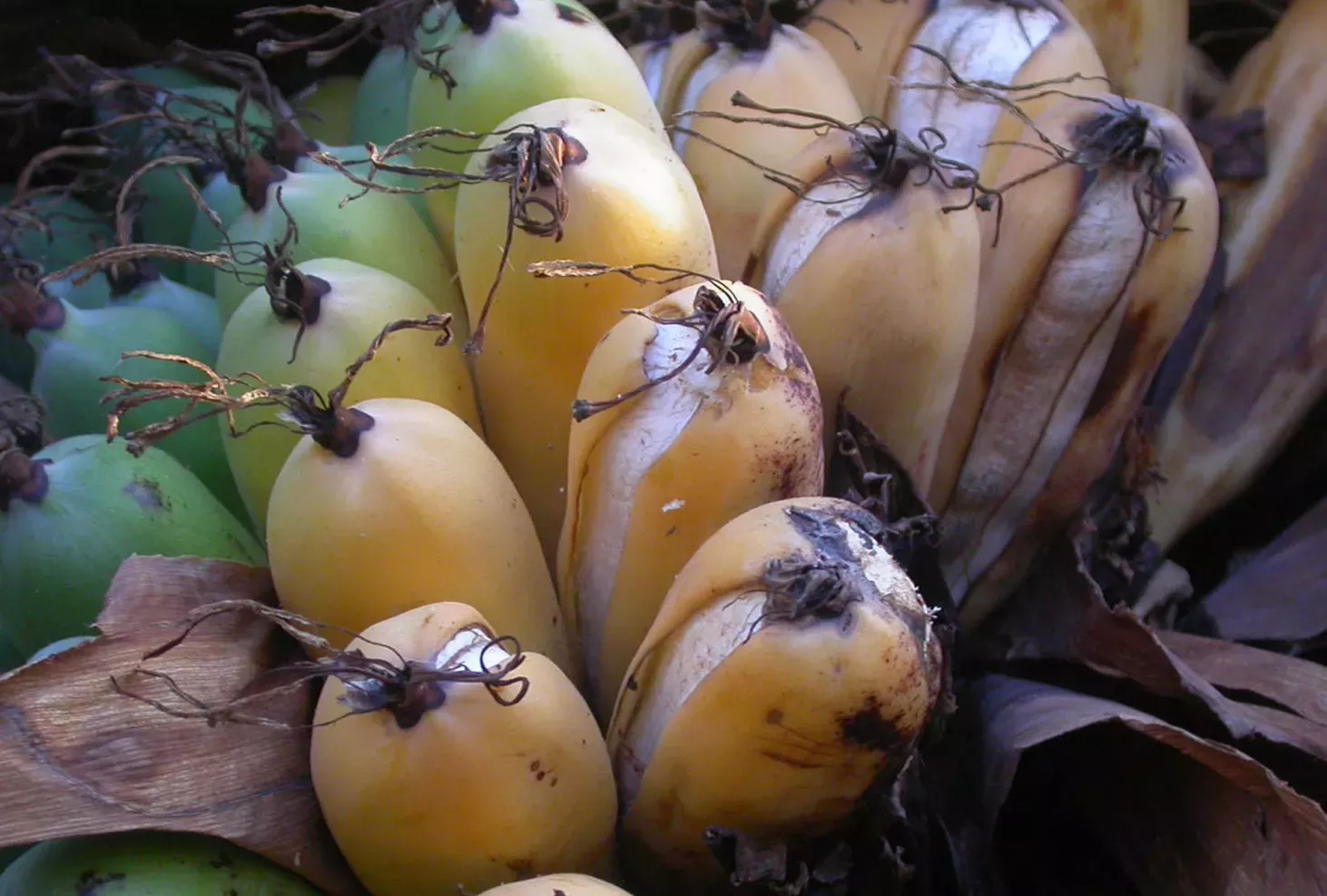

Seeds as back-ups, and solutions
With land use change and exploitation of species accelerating, and climate change amplifying the challenges for species, the list of species in the biodiversity crisis is growing. Plants are fundamental to all life on Earth and seed banking is playing an essential role in creating a safety-net against extinction.
The Millennium Seed Bank
With a focus on endangered, endemic and economically important species, Kew is working with a network of partners to bank over a tenth of all wild plants in the Millennium Seed Bank Partnership. More than 12.5 per cent of wild plant species have been banked so far, with over 2.3 billion seeds currently housed at Kew’s purpose-built facility in Wakehurst Place.
Yet these seeds are not just passive ‘reserves’, locked away in a vault - they are also active solutions. The genetics of these seeds contain tools that can be applied to some of the world’s most urgent global challenges. They can be actively used in projects to restore degraded habitats, increase the resilience of ecosystems and recover species in the wild. Banking the wild relatives of crop species can reveal a suite of adaptations that can be bred into crops – enabling food systems around the world to adapt to a changing climate.
With a growing network of partners across the globe, this project meets all three objectives of the CBD: to conserve, sustainably use, and equitably share the benefits arising from the use of biodiversity.
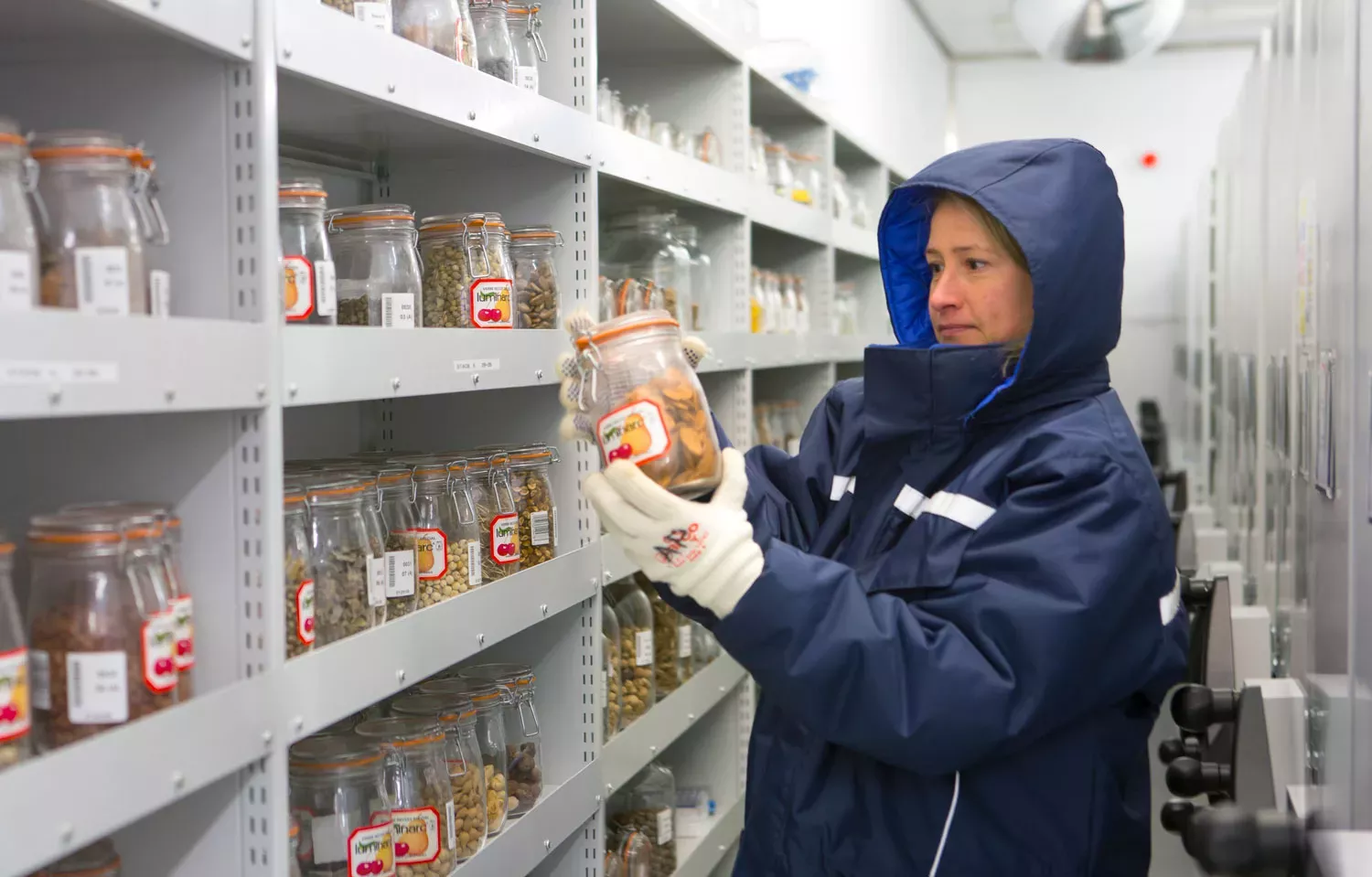
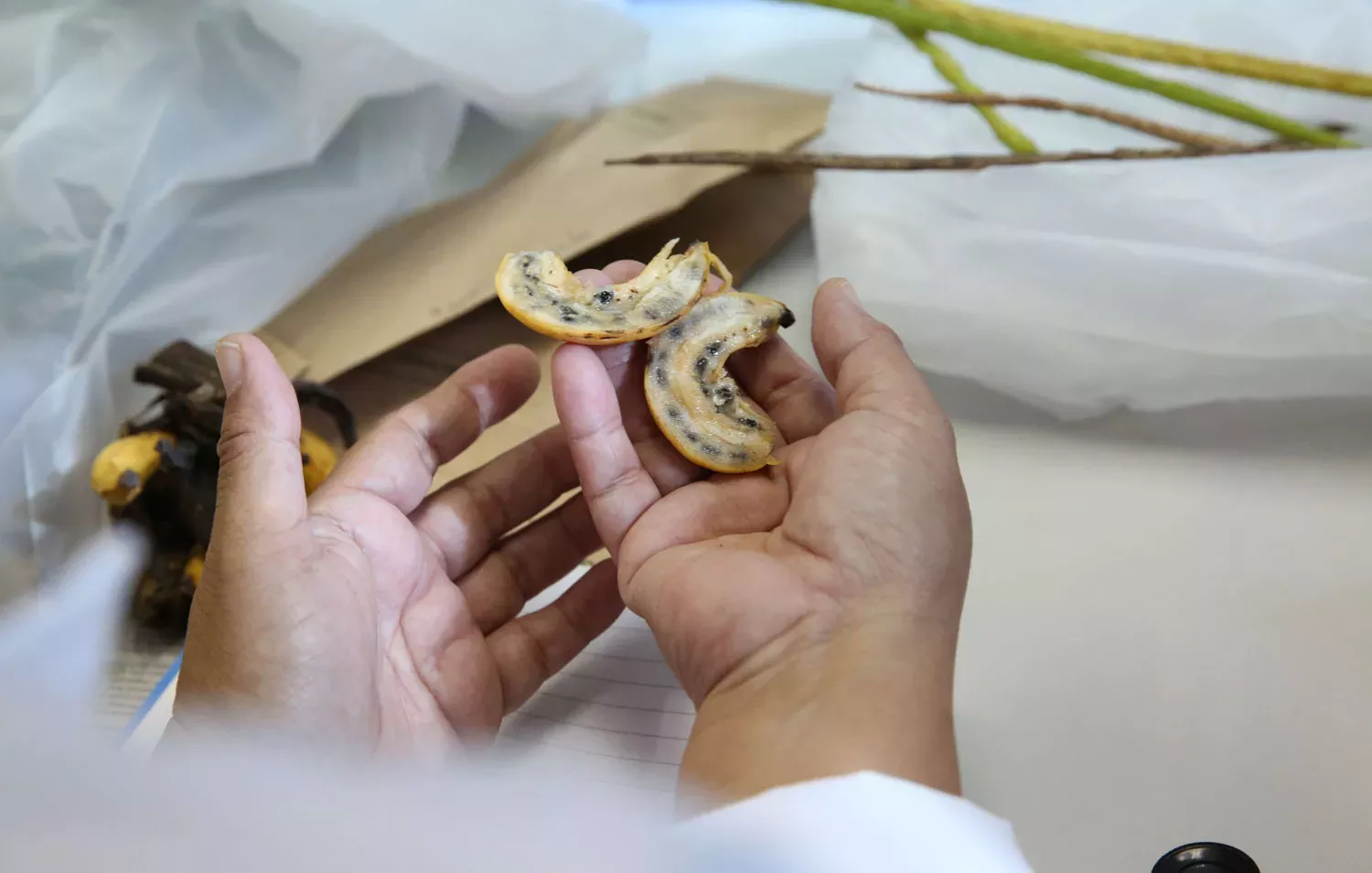
The multiple value(s) of plants
Conservation work always requires a combination of approaches – and conserving species in their native habitats is crucial. An important limitation of seed banks is that not all seeds can be banked. This is particularly true of many tropical plant species – the very same species that form the basis of ecosystems that are globally relevant for climate regulation, and critical for millions upon millions of people locally, who depend on forests for food, medicine and livelihoods.
The tropics are therefore a major priority for biodiversity conservation at a global level - nowhere are the intricate links between biodiversity, sustainable development and climate change clearer.
Tropical Important Plant Areas (TIPAs)
Building on an approach that has secured habitats across Europe, the Mediterranean and North Africa, Kew has carefully adapted Important Plant Area (IPA) criteria to suit the paradox of the tropics: a relative lack of plant data, but urgent need for action.
Working closely with partners in-country, Tropical Important Plant Areas (TIPAs) are identified within each country according to a range of criteria – from areas of unrivalled botanical richness, to concentrations of threatened species, to areas that are important locally because of plants that are used.
Formally recognising these areas can help make a compelling case for protecting habitats, in regions that are trying to balance development with preserving irreplaceable biodiversity. TIPAs can help with the planning of protected areas, contributing to global goals to protect 17 per cent of land, or lead to legal recognition for community areas, contributing to the UN Sustainable Development Goals (SDGs). They can also put plants on the radar in the planning stages of development projects, allowing short-term and long-term trade-offs to be more accurately considered.
TIPAs therefore act as a tool to empower local decision making, whilst simultaneously highlighting how national plant conservation fits within an international picture – bridging gaps between global policy and national context.
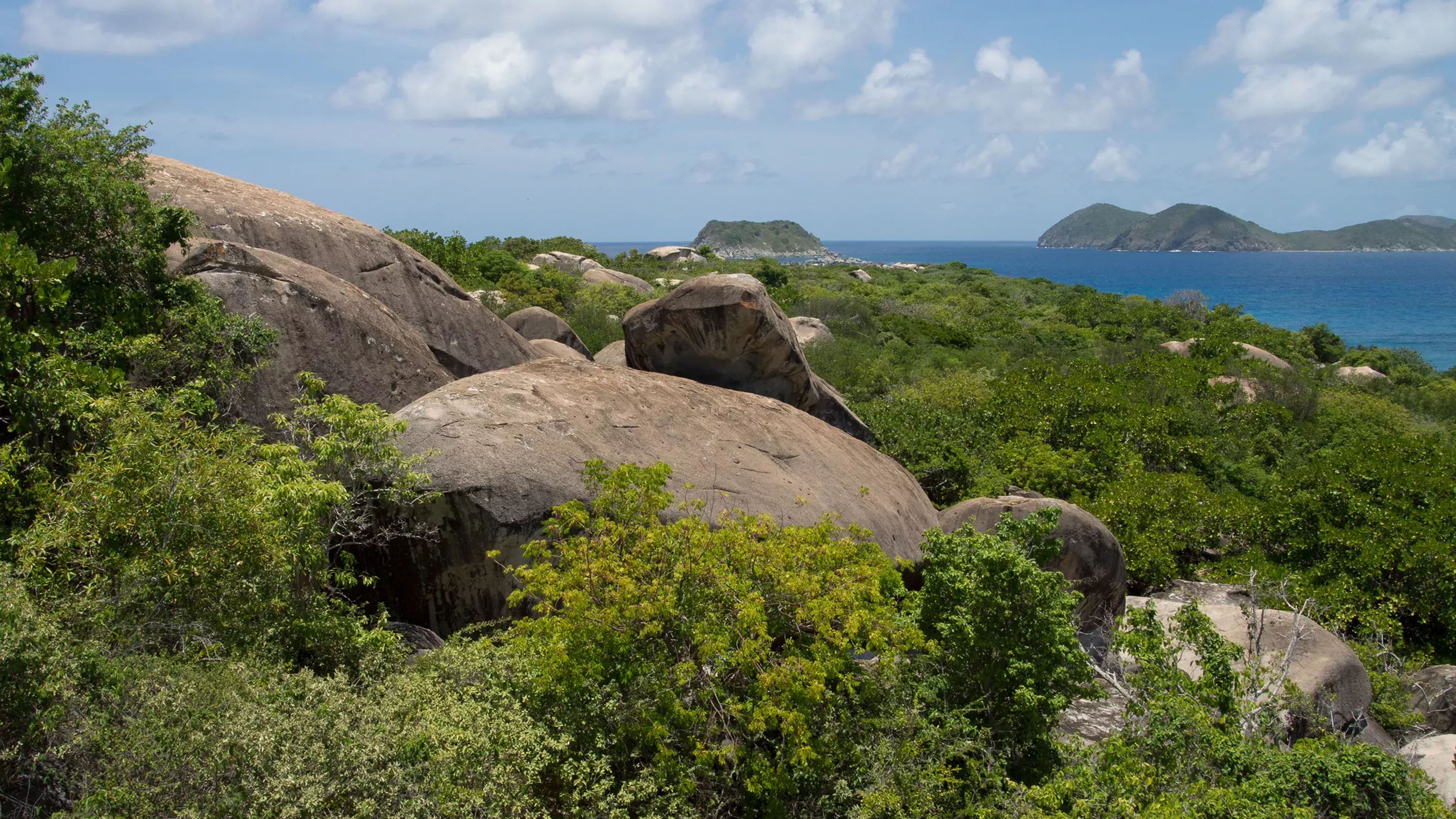
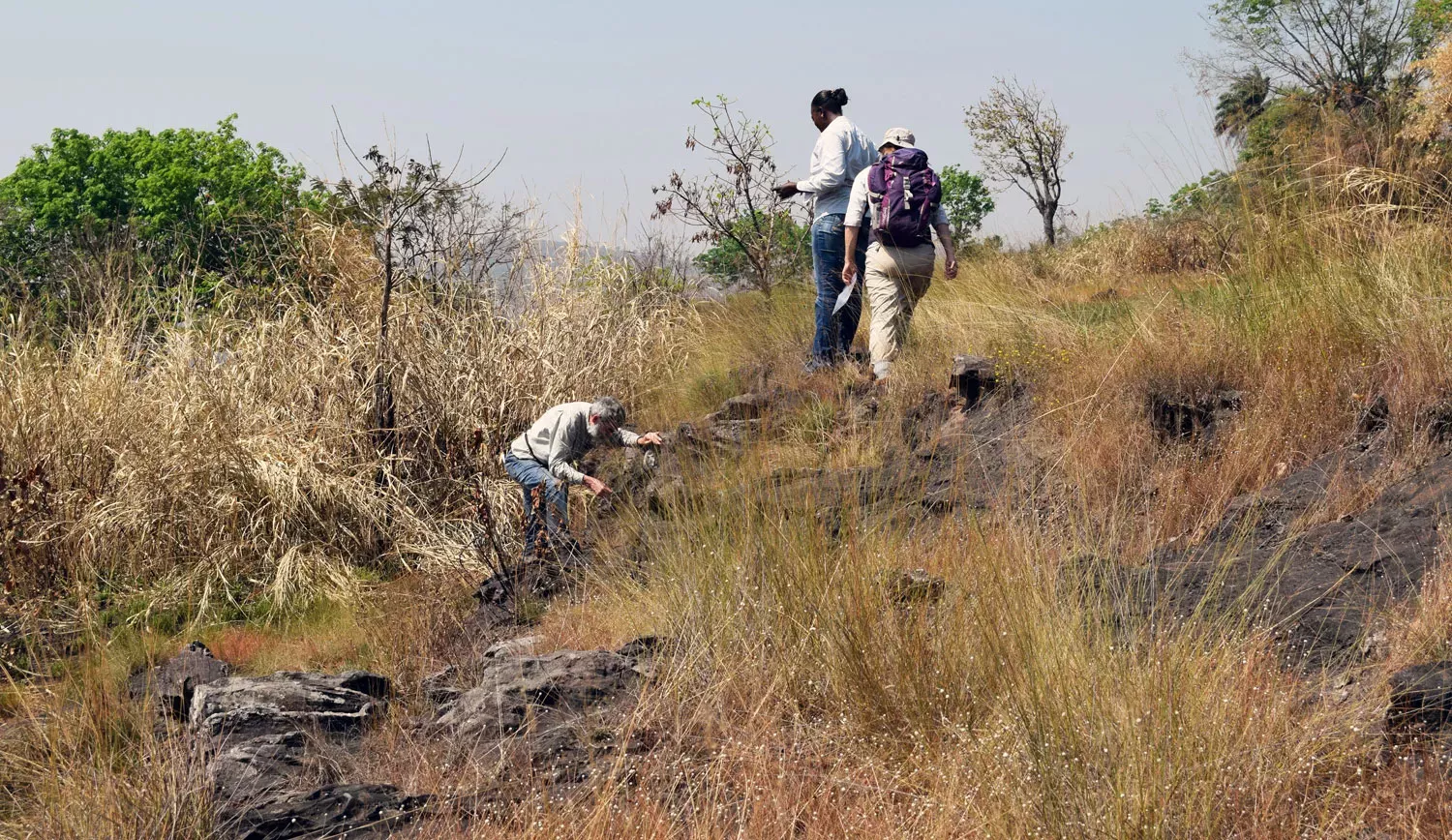
A critical opportunity
Bending the curve of biodiversity loss is a momentous task. It requires a combination of approaches that include all aspects of biodiversity: from species, to genetics, to ecosystems.
The upcoming UN Convention on Biological Diversity represents a critical opportunity to galvanise the support and resources needed at a global level. The decisions made in these rooms will filter down to plants, people and habitats in every corner of the planet.
Kew will be striving to ensure plants and fungi are at the forefront of this. And our science continues to reveal the same message loud and clear - biodiversity loss is a major global problem, but conserving biodiversity offers major global solutions too.
References
Corlett, R.T. (2016). Plant diversity in a changing world: status, trends, and conservation needs. Plant Diversity, 38(1), 10-16.
Darbyshire, I., Anderson, S., Asatryan, A., Byfield, A., Cheek, M., Clubbe, C., Ghrabi, Z., Harris, T., Heatubun, C.D., Kalema, J. & Magassouba, S. (2017). Important Plant Areas: revised selection criteria for a global approach to plant conservation. Biodiversity and Conservation, 26(8), 1767-1800.
Mace, G.M., Barrett, M., Burgess, N.D., Cornell, S.E., Freeman, R., Grooten, M. & Purvis, A. (2018). Aiming higher to bend the curve of biodiversity loss. Nature Sustainability, 1(9), 448-451.
Willis, K. J. (ed.) 2017. State of the World’s Plants 2017. Report. Royal Botanic Gardens, Kew.
